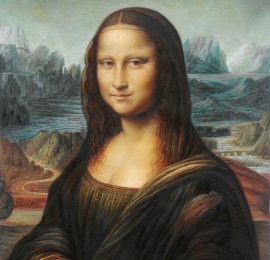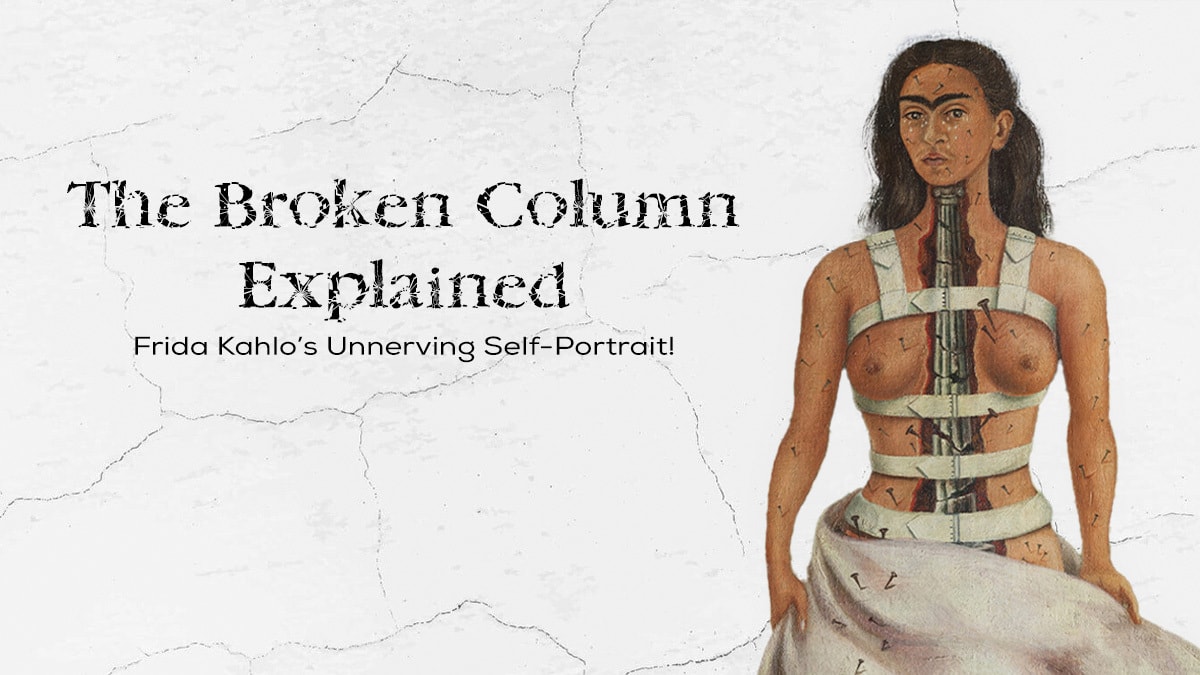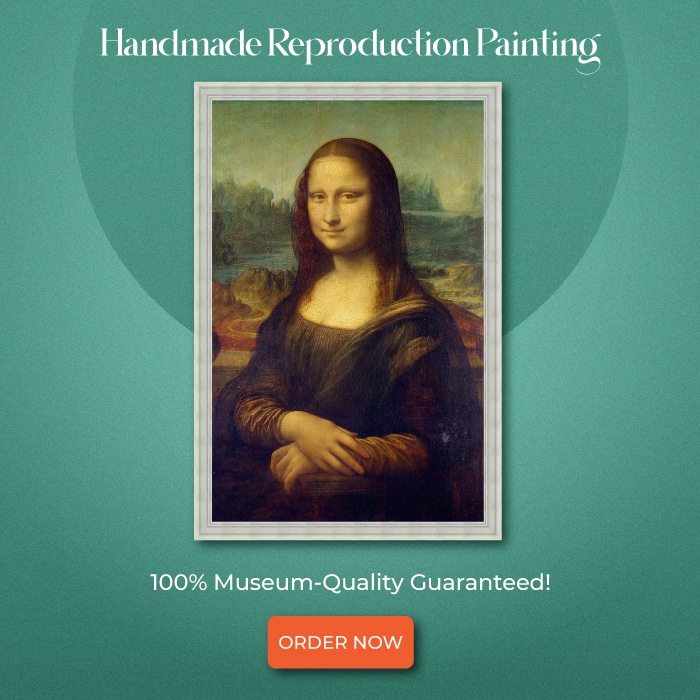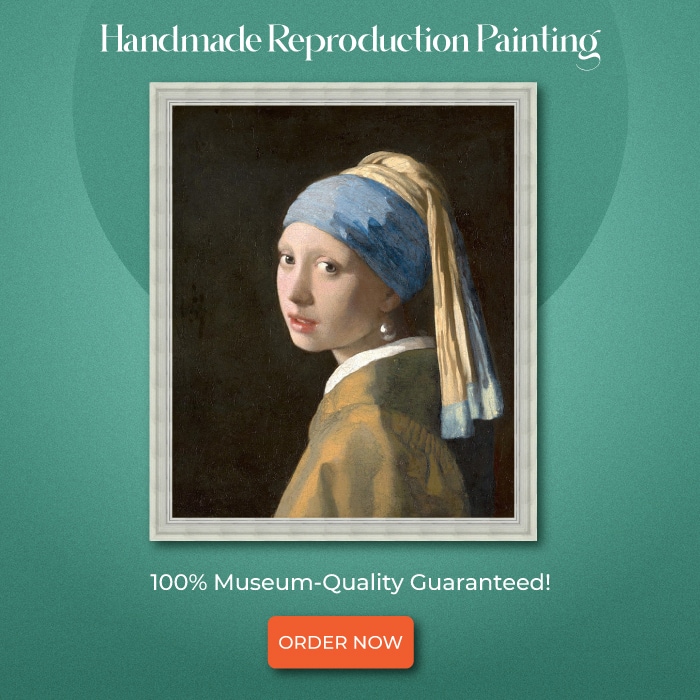Many artists across the world have often surrendered to art to express any big and difficult emotions.
The famous portrait artist Frida Kahlo is also one among them.
And in today’s blog we are analyzing one of her special masterpieces, The Broken Column!
For someone who has gifted the art world an avalanche of paintings that hold deep, personal meaning, deserves love and attention from us.
Although being born in 1907, she breathed her last at a young age of 47, in 1954.
What she left behind was a huge collection of paintings, especially self-portraits which were all one of a kind!
There is so much you can decipher from Kahlo’s artwork, and here we have The Broken Column, a very special self-portrait from her collection.
Why so, you’d wonder, right?
I have curated a detailed analysis of the painting, in which we will look at the socio-historical context, what influenced Kahlo and the story behind it.
Apart from that, we will also closely analyze the painting in itself, dissecting the breathtaking details that Kahlo has portrayed!
Table of contents
- Frida Kahlo: The Queen of Self-Portraits
- Introducing The Broken Column
- The Socio-historical Context
- Contextual Analysis: What Influenced Kahlo?
- Was Kahlo a Surrealist Artist or Not?
- Formal Analysis: Let’s Get Into The Technique!
- To Conclude: The Broken Can Still Be A Muse!
- Author Says Hi!
- Frequently Asked Questions
Frida Kahlo: The Queen of Self-Portraits
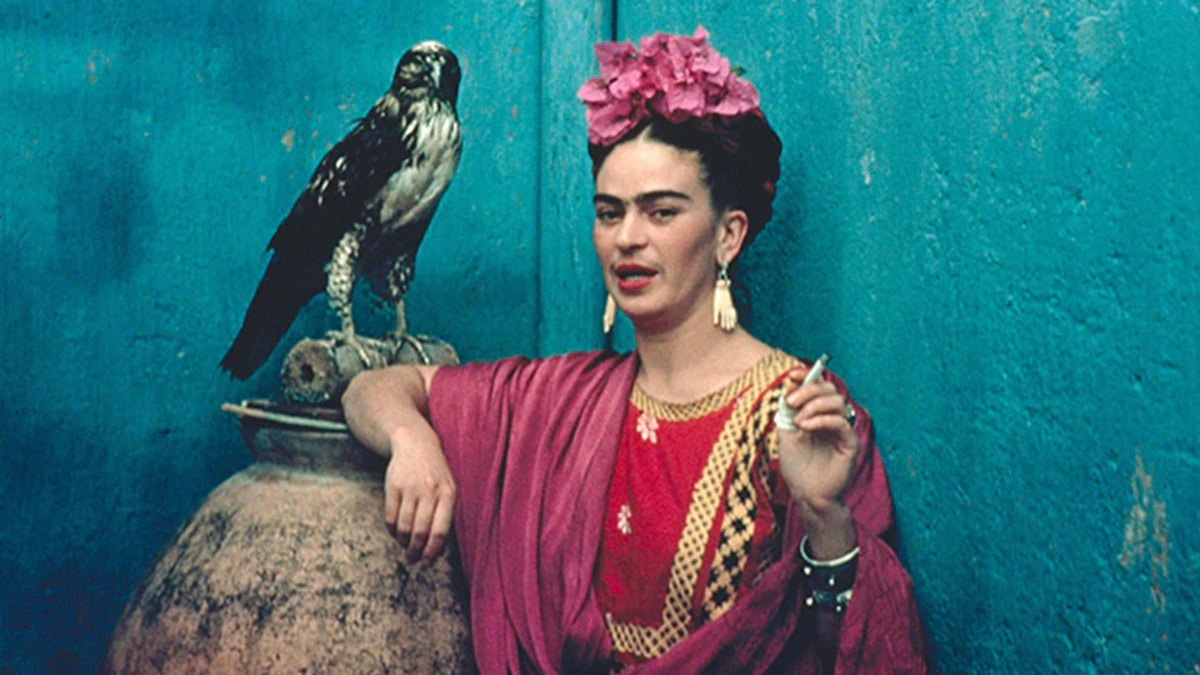
Here is a fun fact– out of 143 total paintings that Frida Kahlo created, 55 of them were self-portraits!
Yes, Kahlo had depicted herself in 55 different canvases, and often in different forms and with different symbolism.
Frida Kahlo’s paintings were a reflection of her physiological and psychological self, extending on the canvas to convey something.
Her portraits also represent her deep love for Mexican folk culture and her ethnic roots through certain motifs and symbolism.
Because her self-portraits stem from her own life, The Broken Column can be considered one of the most important ones among the lot!
It commemorates the beginning of her art journey as a portrait painter and a revolutionary artist!
Enough building suspense— let us get into the painting already!
Introducing The Broken Column
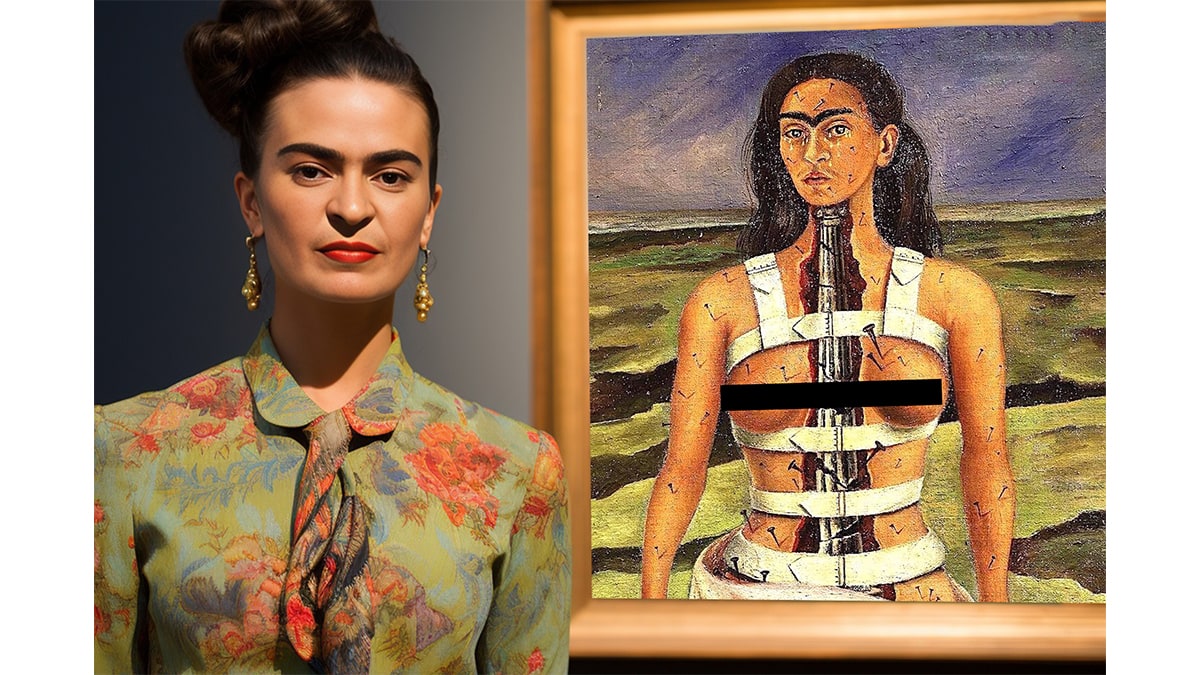
The Broken Column, also known as La Columna Rota, was painted in 1944.
It was created taking full inspiration from an incident that happened in 1925.
This famous female painter poured out her most vulnerable self into this painting.
Kahlo shows her naked, raw self, writhing in pain!
At one glance, what are the elements that stand out in this painting?
The tears, the nails, the naked body, and the gaping open column that exposes a metal rod where her spine should be!
Together it is an unsettling sight, one that will make you question every detail of the painting!
The painting represents the most tragic accident of Kahlo’s life that set the stone to many more grieving days.
It also marks the beginning of her journey as an artist where she could do nothing but turn to art to deal with the pain and grief!
A bedridden Frida, some paints and a canvas; that is all she had while being bedridden!
Little did she know her art would tell her story louder than ever for ages and ages.
| Artist’s Name | Frida Kahlo |
| Completion Year | 1944 |
| Medium | Oil on Masonite |
| Genre | Self-portrait painting |
| Period or Art Movement | Surrealism, Magical Realism, Mexicayoti movement |
| Where is it currently housed? | Museo Dolores Olmedo, Xochimilco, Mexico City, Mexico |
The Socio-historical Context
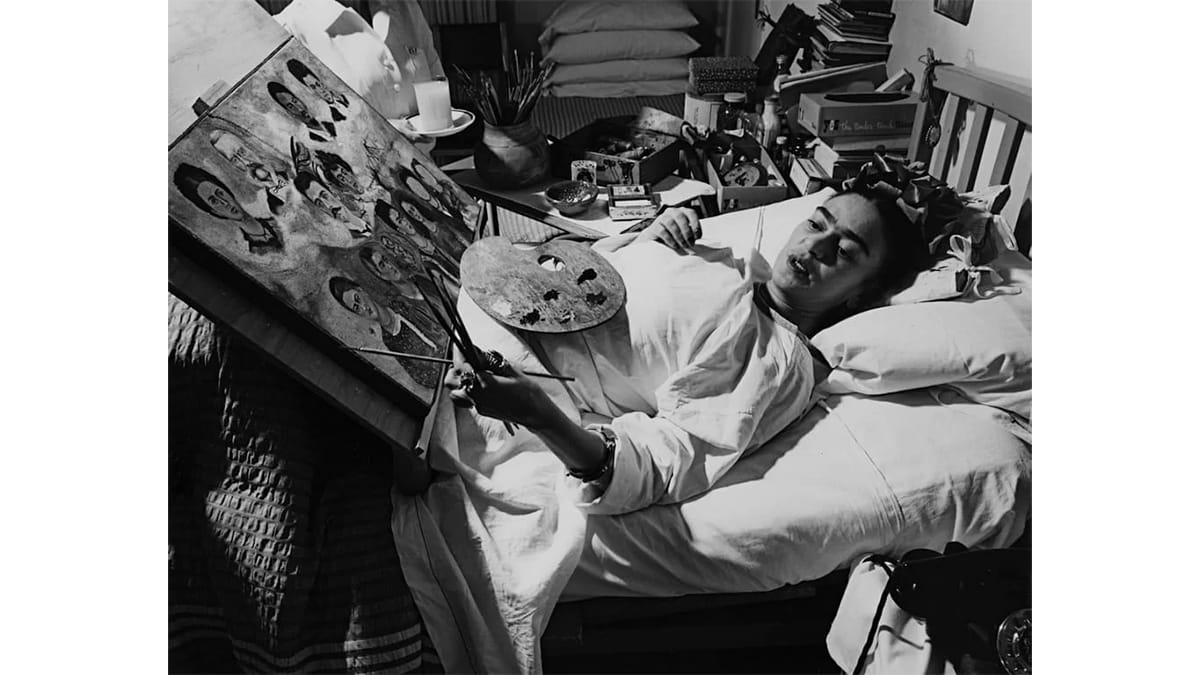
To understand this Frida Kahlo painting better, we need to look into her life experience from which it stems from— the bus accident!
When Kahlo was 18 years old, she was traveling back home from her school, when the bus collided with a car.
This horrendous accident almost took Kahlo’s life, but it left her with some horrific wounds.
She somehow survived with some very brutal injuries!
A metal rod impaled her through her pelvic hip area, destroying everything in its way, including her abdomen and uterus!
Apart from this she fractured her spinal column, collar bones, ribs, and leg.
Oh, we could only imagine the agony she must have gone through!
To recover from this massive disaster, she was bedridden for three months.
She had to wear metal corsets and casts to hold her falling body.
It is during this time when Kahlo starts painting on the easel, and her casts.
Once she started painting, there was no stopping her!
She mostly painted herself, her family members, and her friends, trying to convey something.
Painting was probably the only medium to free her from the physical and mental agony!
And that is how the art world was gifted with such a brilliant artist, and her art continues to move people even to this day.
Even though Kahlo learned how to walk again, the pain she endured remained with herself till the last phase.
So, what turned out to be the most tragic incident of her life also turned out to be the reason Kahlo became a unique artist!
And all of that is portrayed in one single painting, The Broken Column!
Suggested Read: Almond Blossom by Van Gogh: A Painting of New Beginning!
Contextual Analysis: What Influenced Kahlo?
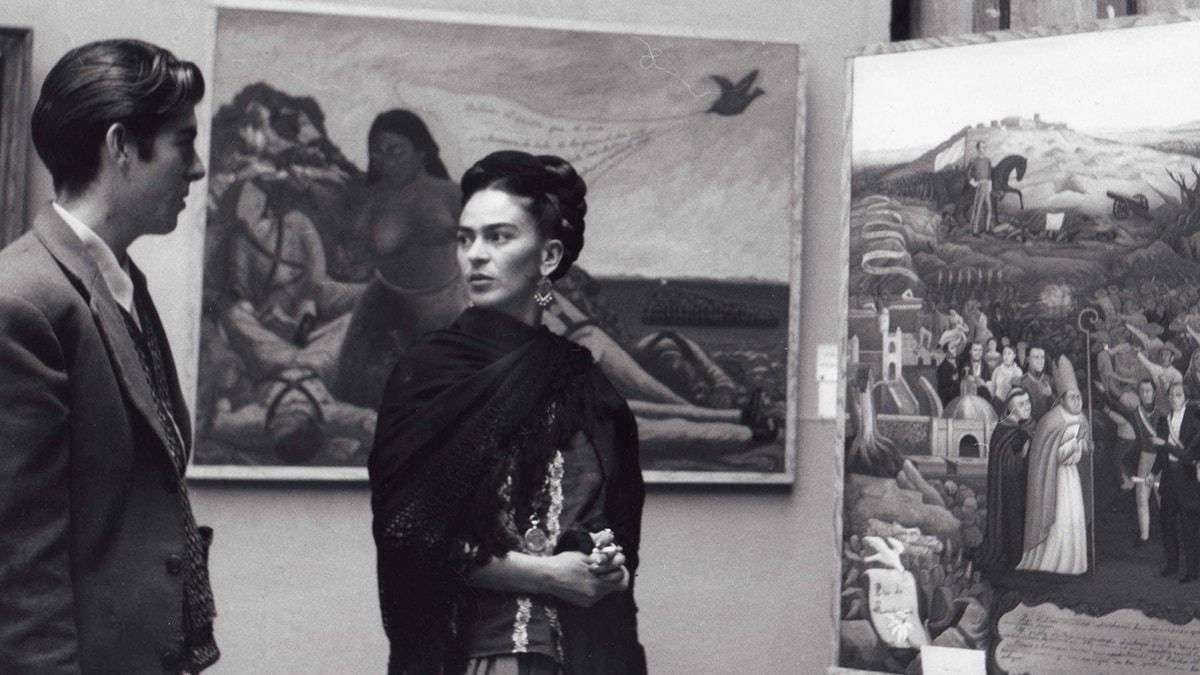
Although this Mexican artist started painting when she was bedridden, her artistic inclinations started way earlier than that!
Her father, Guillermo Kahlo, a talented photographer has had a huge impact on Kahlo when it came to giving attention to detail.
Frida Kahlo has often been the subject of her father’s photography.
These photos show how confident and composed she was in being photographed.
This is probably the reason why she is so comfortable creating her self-portraits with great precision, including The Broken Column!
Apart from this, she was also given the job to touch up photographs by her father.
By doing this, she also conquered good control of the paintbrush!
In her teenage years, she was also an apprentice of Fernando Fernandez, who was an engraver.
So, as you can see, although she was mostly self-taught, Frida Kahlo had many learnings and influences in her life that refined her art.
Was Kahlo a Surrealist Artist or Not?
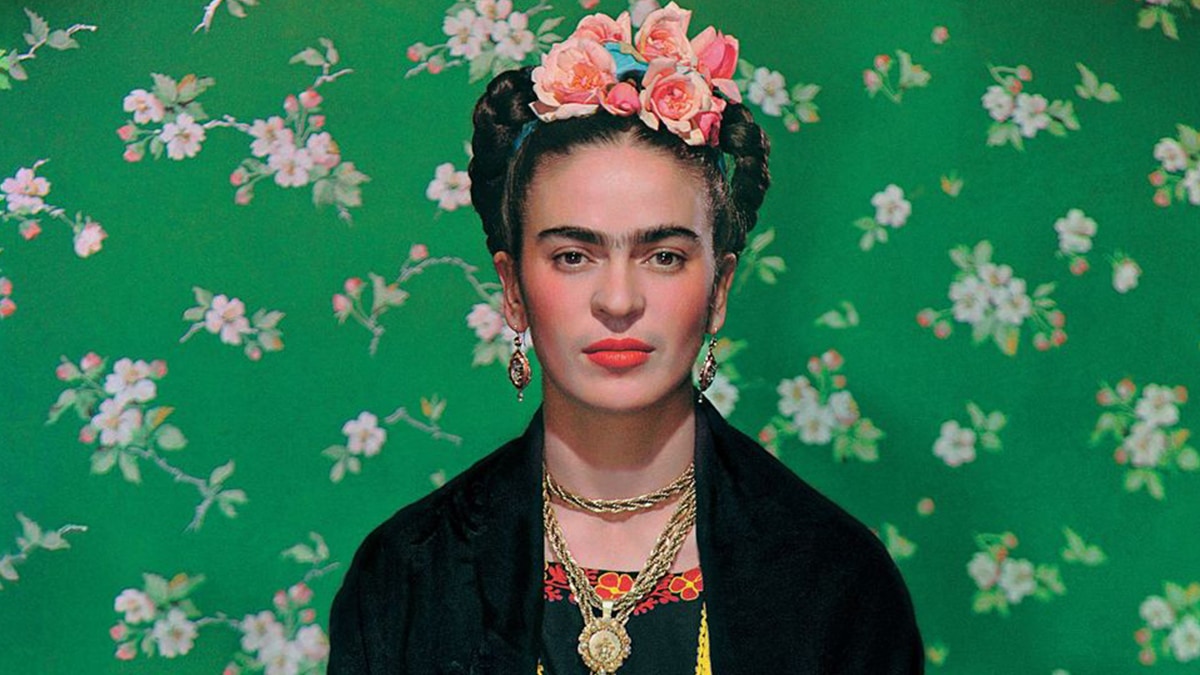
This is a question that art admirers across the world indulge in even to this day!
This is because a lot of Frida Kahlo artworks have been associated with the Surrealism movement!
Another reason is also because she had taken inspiration from Surrealist artist Andre Breton, one of the founders of the movement!
Even though her work shows hints of surrealism and a dreamy experience, Kahlo has been very clear that the art is not Surrealist.
She had stated, “They thought I was a Surrealist, but I wasn’t. I never painted dreams. I painted my reality.”
Her art must have reflected features of Surrealism, but I personally think she could have been more associated with Magical Realism.
Because what she portrayed was her reality, but the way she portrayed it was almost unreal.
Unreal because of with fantastical or dreamy-like elements in her paintings, making it unique!
If you notice closely, this can also be seen in The Broken Column, where she draws from a tragic memory, but depicts herself in a mystical way!
Formal Analysis: Let’s Get Into The Technique!
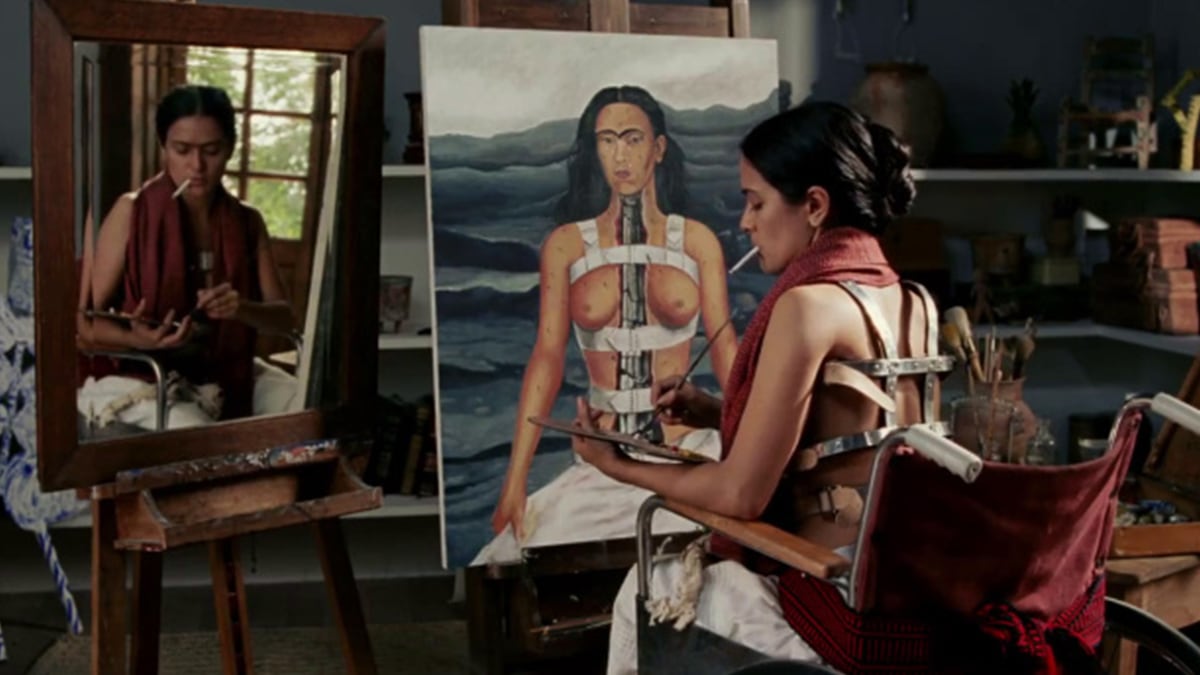
Now that we have a good understanding of the contextual analysis, let us get into the formal analysis of The Broken Column painting.
Below, we will look closely at the painting to break it down and analyze it further.
We have the posture, colors, geometry and emphasis of the painting to look at!
The Subject’s Composure
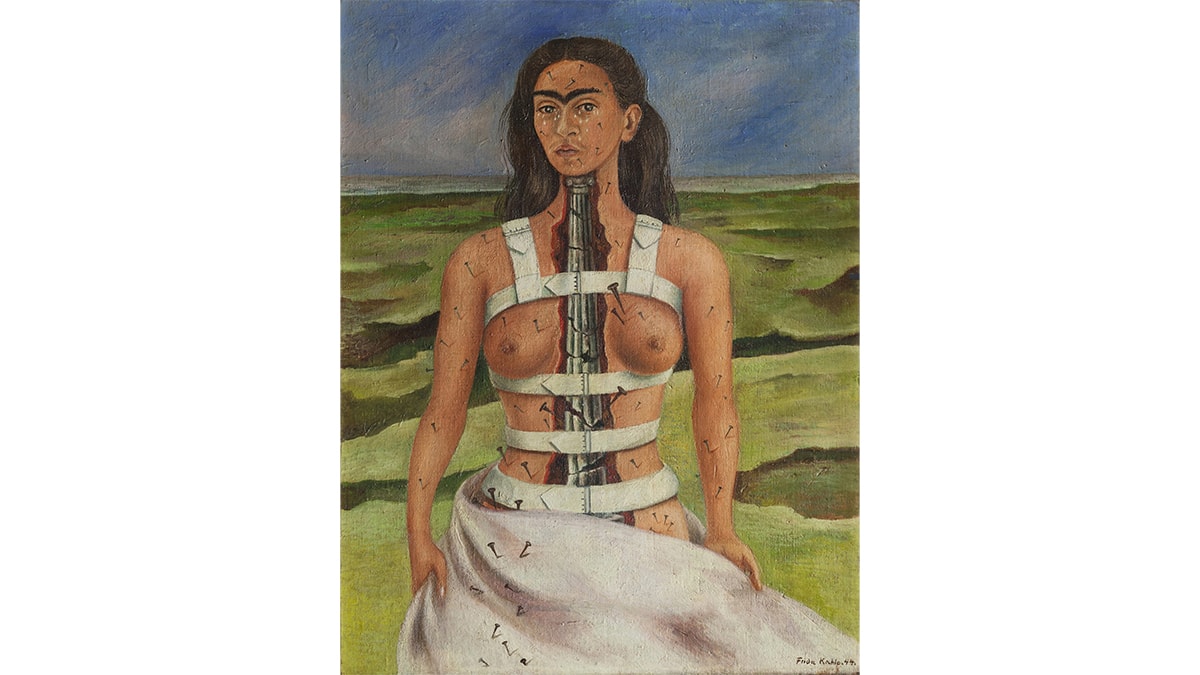
One look at The Broken Column by Frida Khalo, and you see a resilient woman with her gaze forward and solemn.
It is difficult to make out the expression on her face, for it seems composed, but at the same time, there is a tint of forcefulness to it.
Her monobrow enunciates this expression, while her hair is let loose, as tears flow from her eyes.
Frida Kahlo’s upper torso is exposed and naked, seen only wearing what seems like a metallic corset or cast!
The rest of her body is covered with a white cloth, which she is gently holding with both her hands.
We can also see nails piercing into her flesh, all over her body, including her face and mostly her right leg.
But what stands out the most is the gaping cavity in the middle of her body!
This cavity is bloody and exposed, showing a metal rod inside, not in perfect shape.
This metal rod is in the place where the spine should be, depicting her spine injury.
The Shades and Hues
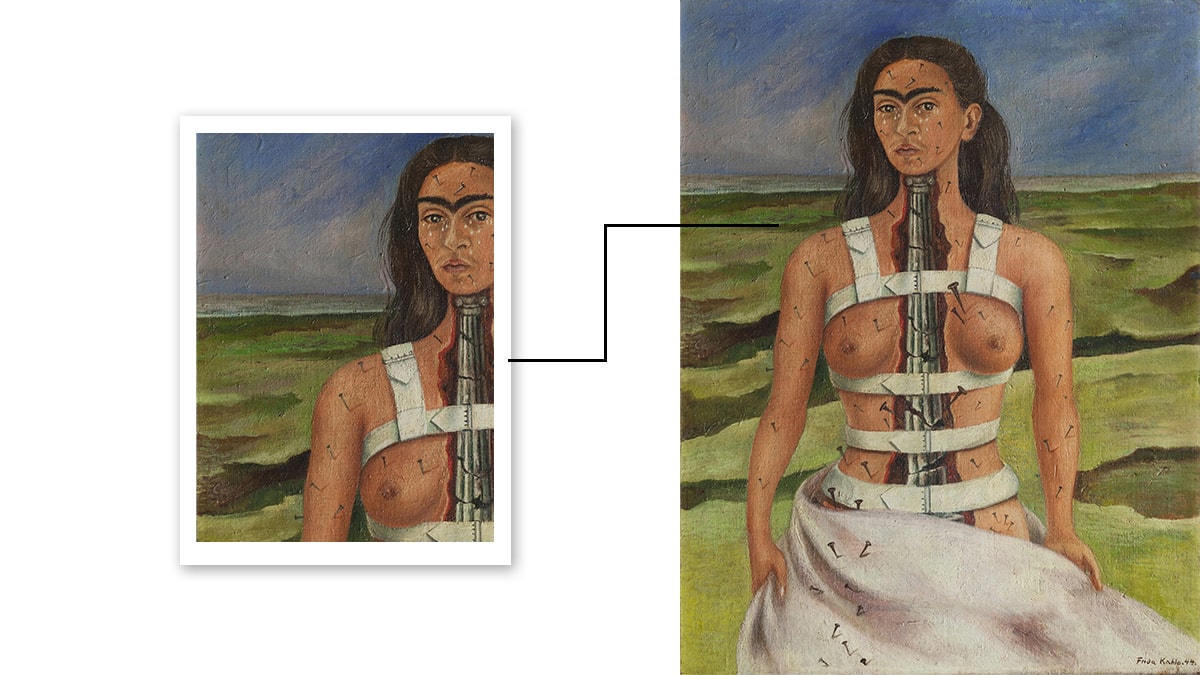
Let us now focus on the colors that Kahlo has chosen for The Broken Column.
We can notice earthy tones here— browns, greens, blues, and whites. But all these colors are rather used in a somber tone!
The colors suit the emotion that is being conveyed through the painting– pain and misery of mental and physical struggles.
If you closely observe, you will see that the tones of the background remind you something.
The tones of the land and the sky are projected onto the subject!
Which means, it is almost like Kahlo’s state of being; shadowing her.
The background is mirroring and complimenting each other’s qualities.
(Also Read: The Two Fridas: Analysis of Frida’s Double- Self Portrait)
The Literal Columns in the Painting
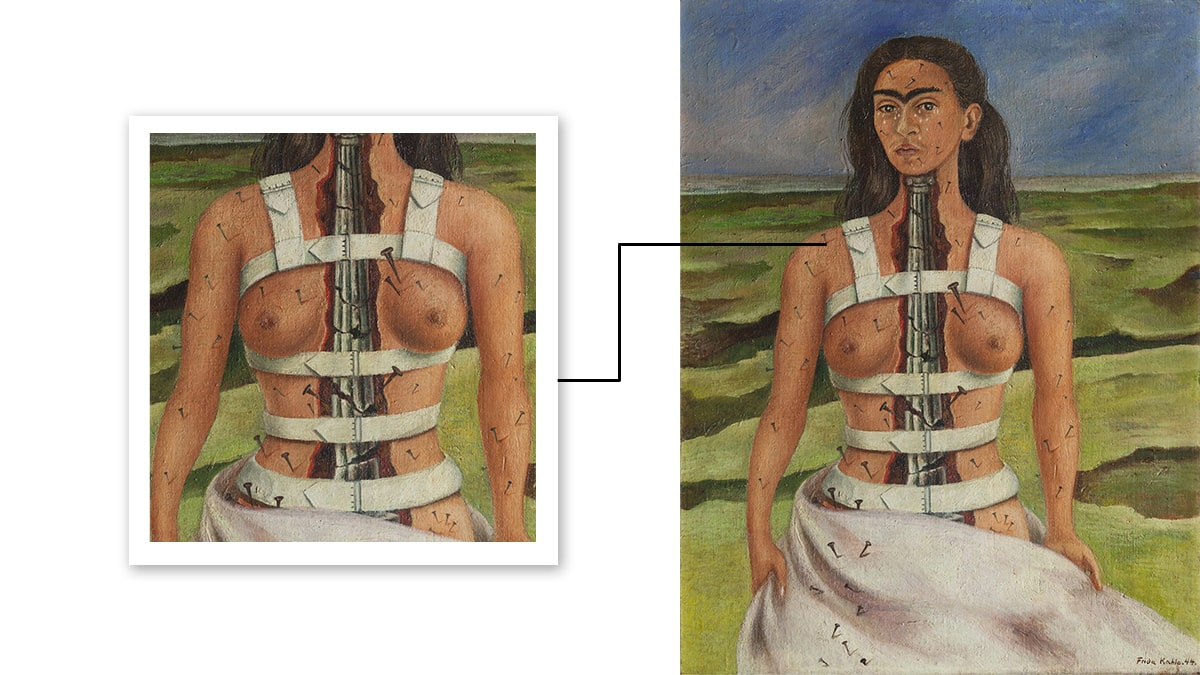
Let us look at the pattern that can be seen in The Broken Column!
Focusing on the lines and shapes here, what stands out the most?
Yes, the horizontal patterns that are inculcated through her metal corset and also in the background behind.
Furthermore, the monobrow also acts as a horizontal design that structures the whole painting together.
This repetition of this particular direction of things compliments each other.
Also, apart from the metal corset, nothing else is in perfect alignment because they are either slightly slanted or curvy.
This could represent the chaos Kahlo was enduring, while the body cast, being linear, somehow kept herself together!
Symbolism and Motifs
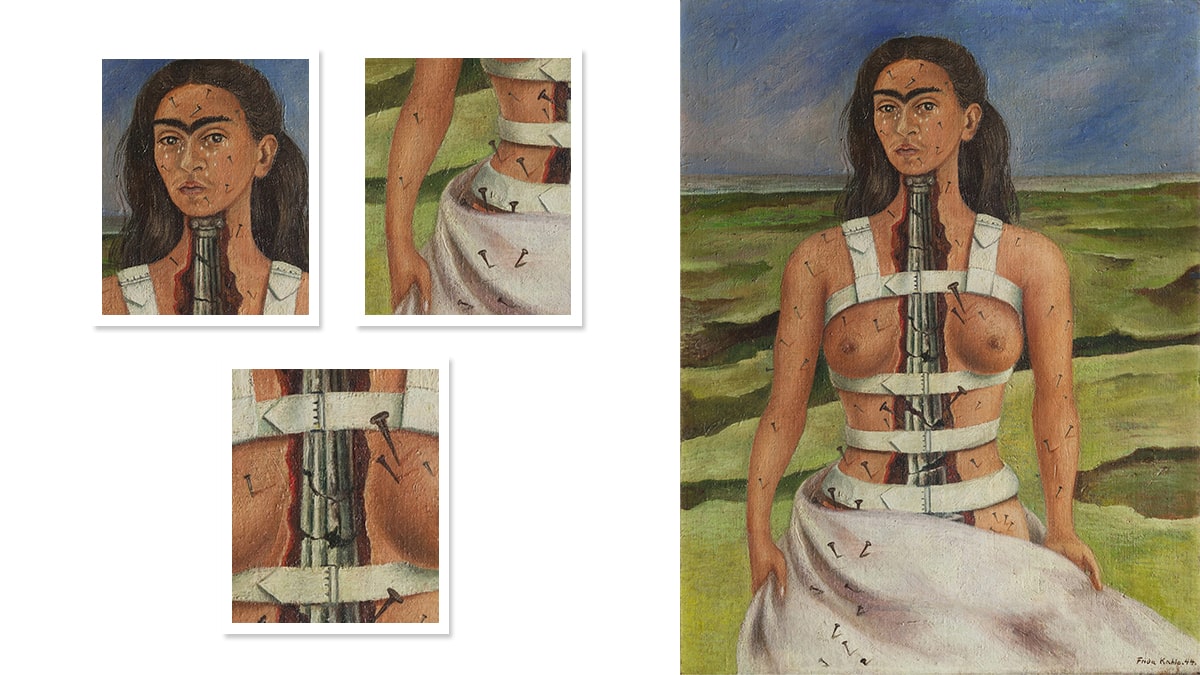
There are quite a few symbolisms and motifs that we can find in The Broken Column.
To start with the way Kahlo has dressed herself in white and adorned with nails suggests a religious symbolism.
The white cloth represents purity, connecting to Virgin Mary and the nails represent Jesus Christ when he was put on the cross!
This also showed her helplessness in the situation, of how she could be accepting it all as God’s way of testing her.
Her posture and the white cloth also seem to have been taken inspiration from Saint Sebastian painting.
Now let us bring our focus to the metal rod in the center of La Columna Rota.
It seems to be the focal point of the painting, holding everything together.
But what adds to the melancholy is that even the rod is not in its pristine condition, in fact it has several cracks.
This hints more at the mental agony of Kahlo, who completely depends on something that could someday just collapse, and with it, Kahlo too!
As tears flow down her face with a numb expression, it depicts how the suffering is silent, and is unfathomable for anyone.
This Frida Kahlo self portrait also depicts how this accident is also the cause of impending pain and suffering that will never leave her.
It is immaculate how Kahlo creates a painting that is so personal but also at the same time relatable to many!
To Conclude: The Broken Can Still Be A Muse!
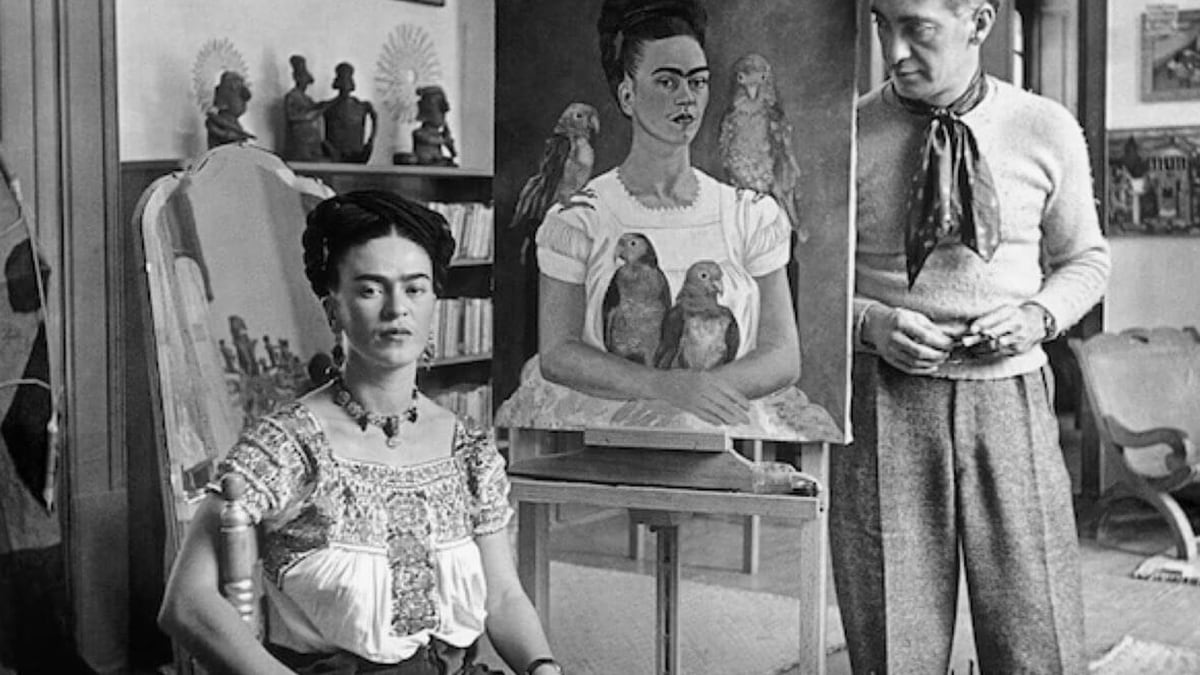
Frida Kahlo was always brazen to depict the dark and vulnerable sides of her through her art.
She often depicted her “broken” sides on canvas, but the uniqueness of this is how she has also been her biggest muse throughout her career!
There is this sense of rawness you won’t see elsewhere that you will see in Kahlo’s paintings, especially in her self-portraits.
She had embraced her “broken” self through all the pain and suffering and yet thrived to produce as much art as possible in her lifetime.
Frida Kahlo’s self portraits are a prime example of how the broken can still be beautiful and endearing while also exposing the harsh realities of life!
Author Says Hi!
Hola, que tal?,
I hope you liked reading this piece, because I absolutely loved writing about the queen of self-portraits.
There is so much that we can learn from Frida Kahlo, and the bravery to express your heart out is definitely one.
I’d love to hear your thoughts on the painting and the artist, so feel free to reach out in the comments.
Until the next one,
Cheers xx
Frequently Asked Questions
The Broken Column was painted taking inspiration from a very tragic accident of Kahlo’s life when she was just 18 years old. This self portrait was painted after her spinal surgery. She is shown wearing a metallic corset, acting like a cast, and in immense pain!
Is The Broken Column a Surrealist artwork?
No, The Broken Column is not a Surrealist artwork because it was inspired by Kahlo’s own tragic life experience. She used the painting to channel her pain and misery, which was an aftermath of the tragedy.
Frida Kahlo was 37 years old when she painted The Broken Column, 19 years after her accident.


